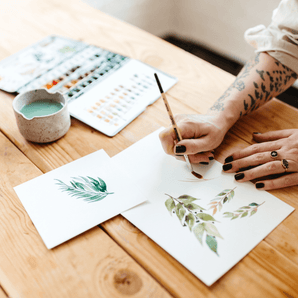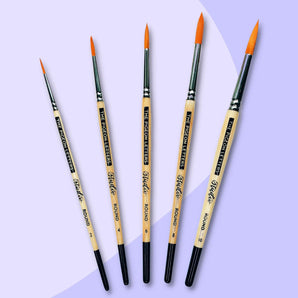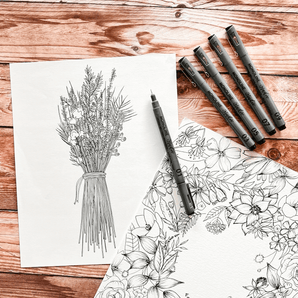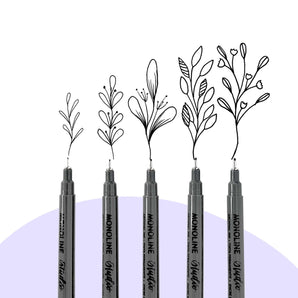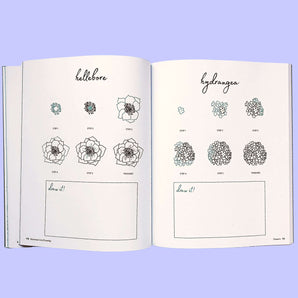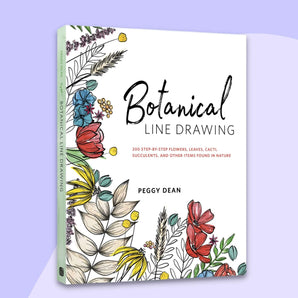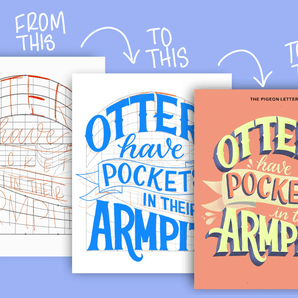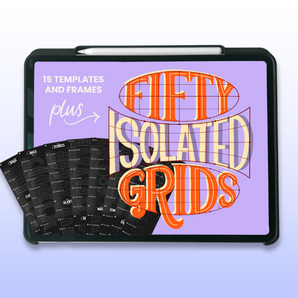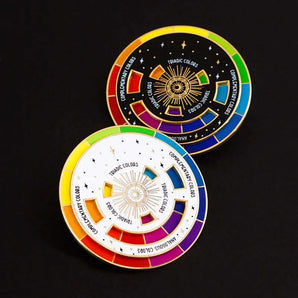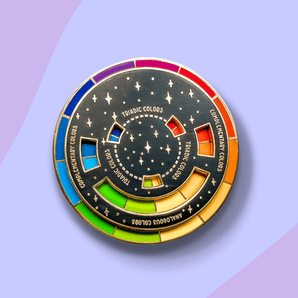I recently shared about how easy it is to make things harder than they need to be, and before I even blinked, y’all showed me that you can relate (thank goodness we’re not alone in this).

Here are 2 main ways that I use to combat my need to overthink, overwork, and overwhelm, and I’m sharing them with you because I know that once you try them, you’ll eat them right up.
Exercise #1: Apply intentional restrictions to your art project
Here’s what I mean: Limitations boost creativity because they make you work within a specific framework or set of rules. These constraints can be external, like budget limits, time crunches, or available resources, or self-imposed to spark fresh ideas.
For example, you could:
- Limit your color palette to just three colors.
- Create a piece in a specific amount of time, like an hour.
- Restrict yourself to using only recycled or found materials.
- Challenge yourself to draw or paint with your non-dominant hand.
- Set a theme or subject matter that’s out of your comfort zone.
These kinds of self-imposed limitations can push you to think outside the box and come up with innovative solutions, leading to unique and creative outcomes.

Procreate Lettering Lab is open!
Exercise #2: Utilize thumbnail sketches
I want you to pretend I’m shouting that from the top of a mountain. Seriously.

I used to be so resistant to drawing out rough drafts because, well, c’mon, I’m a maverick, incredibly impulsive, and I want to dive into my artwork headfirst without planning, like, yesterday 🤣 And because I rushed into my creative process too quickly, it caused me so much frustration and lackluster results. So if I can take the 2-5 minutes it takes to do this exercise when I create art, you can too.
Here’s a step-by-step:

Gotta love the irony here 😅
Step 1: Pick your topic
For this example, I’m going to use hand lettering.
Firstly, you need a canvas for your creativity - a phrase, sentence, or quote to letter. It could be a a phrase that's stuck with you from a recent read, a recurring thought, a famous quote that you return to again and again, or even your favorite song lyrics. Pick something with a minimum of 5 words, but no more than 15 (cuz let’s not get carried away).
Write it down, chicken scratch style. No need to get fancy with layouts or styles at this stage. You just need to visually see the words.
Step 2: Choose your spotlight
After you write your words down, mark the words that stand out and most represent the phrase as a whole. Be mindful of which words you emphasize because it will read the boldest and you don’t want to distort your intended message These call-out words are your key players in the hierarchy of your design.
In the example quote “gonna make this harder than it needs to be” (above), I emphasized “harder” and “needs”
Step 3: Create 3-6 thumbnail sketches
Your first decision involves the format of your piece - square, portrait, or landscape. Then, begin by drafting some miniature sketches to get an idea of your overall design and composition. These should be oh so wee, as in, small enough to deter you from dwelling on details.
At this stage, you’re making blobs. I’m not kidding. Don't be too precious with your sketches and don't pour too much time into them. Just let your creative juices flow, ensuring that each thumbnail sketch is different.
From here, you've got two routes:
- You can use a concrete grid to structure your final piece or
- You can sketch freely with loosely defined grids around each word

These are just 2 of many (echo: many.. many.. many..) exercises, but they’re the top two I return to again and again. I go over these and so, so, and I mean SOOOOO much more in Procreate Lettering Lab, so if you haven’t joined yet, the invitation is yours!
This is the NON-copying styles class that I wish I had years ago!
>> You can see everything that’s inside the course right here! <<
By incorporating these types of exercises into your creative routine, you’ll find that intentional restrictions and preliminary planning can lead to more innovative and satisfying results. Every. Time.





